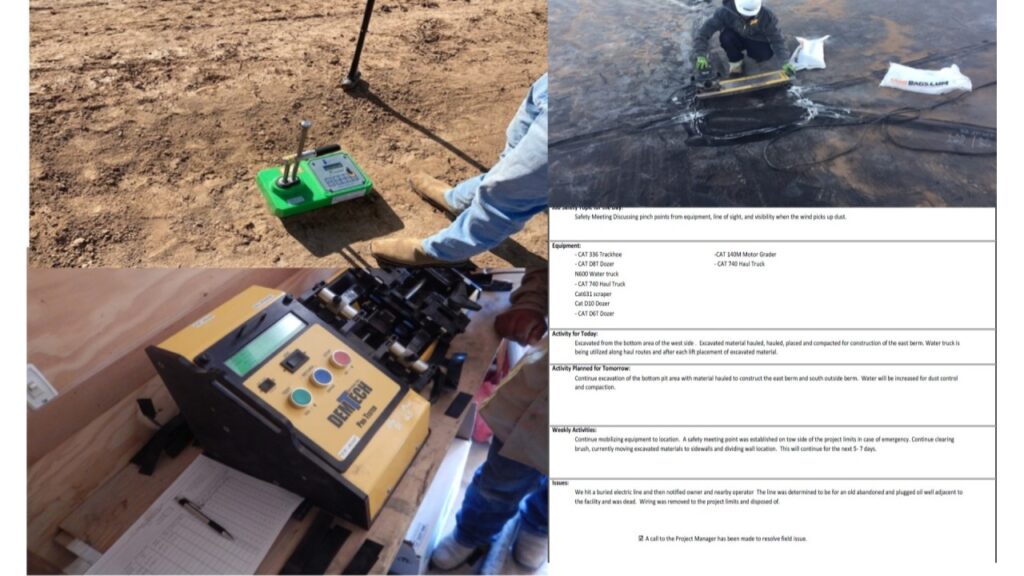Successful project delivery hinges on construction oversight, with site safety as the primary goal. Oversight staff start every day with a safety meeting and have continual surveillance of the project to minimize and mitigate possible hazards. In addition, oversight personnel are responsible for controlling project costs by certifying material delivery, verifying material quantities, and initiating field testing as detailed within the Construction Quality Assurance (CQA) plan.
Before installing the liner, oversight personnel verify that all the materials have proper preconstruction testing and certifications completed and documented. During installation, oversight personnel supervise all field testing on the liner, geotextile, and geocomposite materials. Twice-daily machine pretesting, seam air testing, vacuum box testing, and destructive peel and shear testing are performed in accordance with the CQA plan for proper liner installation. A liner quality control document and any material warranties are submitted to the operator. Aside from strictly focusing on adherence to construction specifications and contract terms, construction oversight helps impoundment projects stay on budget.
Once an impoundment is operational, scheduled inspections are essential to the longevity of infrastructure capital spending. An informal visual inspection is recommended if the facility is used and staffed daily. Formal, written inspections should be performed at regular intervals, at least monthly, along with a comprehensive annual review, and should always include action items and follow-up procedures. These inspections should document, at a minimum:
· Visible cracks, tears, or bubbles in the liner;
· Sloughing, sliding, or slumping under the liner;
· Trash or sheen in the impoundment;
· Proper staging of available safety devices;
· Visibility and condition of signage;
· Condition of the perimeter fence and access controls;
· Condition of access road/ramp;
· Functionality of hoses and equipment;
· Significant erosion of outer berms;
· Noticeable changes in slope vegetative cover;
· Evidence of any seeps; and
· Functionality of leak detection system, if applicable.
Following this sort of checklist will maximize the lifespan of impoundment materials under normal operating conditions.
Additionally, record keeping of internal inspection findings and any follow-up is an industry best practice and can be useful if the permitting regulatory agency ever has questions about facility compliance.
Follow ALL Consulting on LinkedIn to see this Post, and more posts like this!
